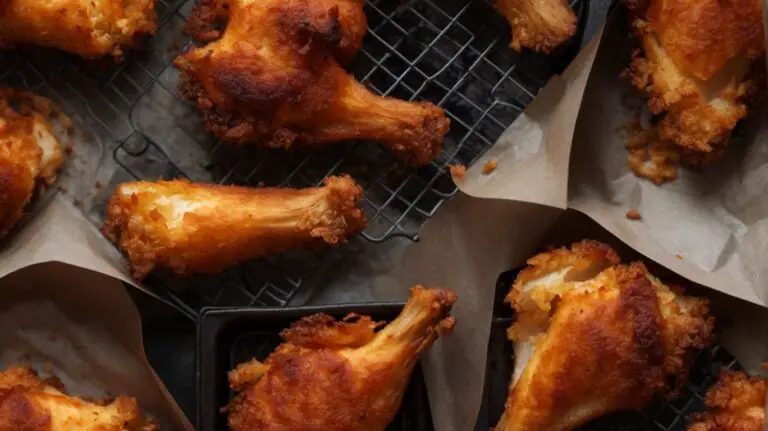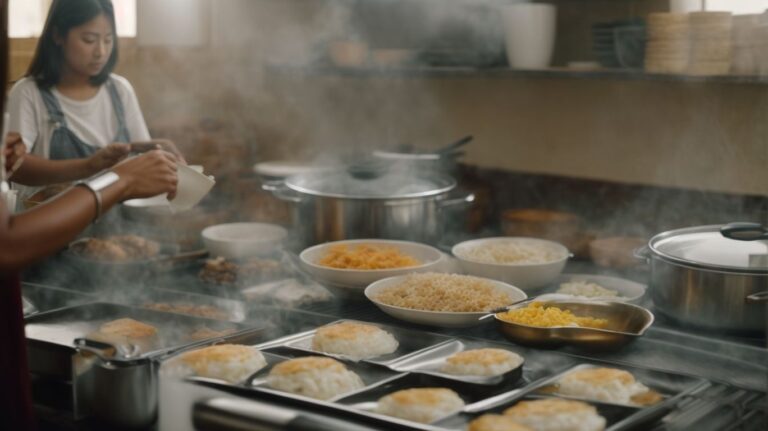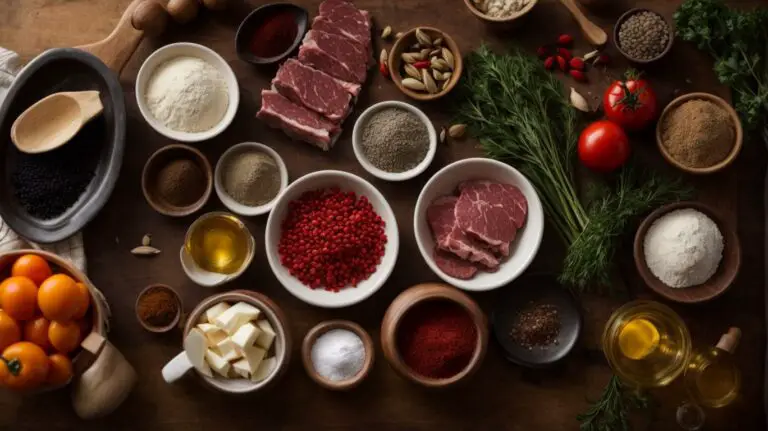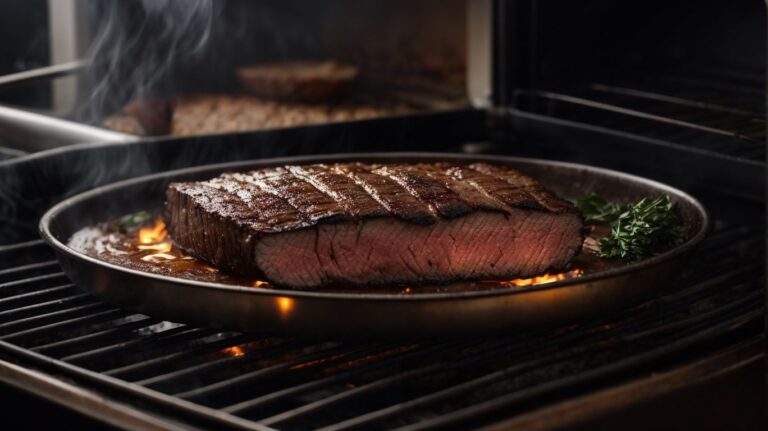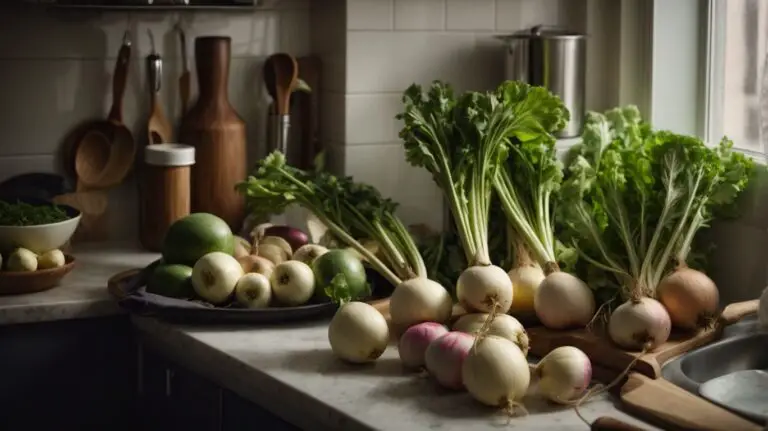How to Cook a Turkey Without an Oven?
Are you looking to cook a turkey but don’t have an oven available?
Explore alternative cooking methods that can still result in a delicious and juicy turkey. From grilling to smoking to slow cooking, there are various ways to prepare your turkey without an oven.
This article will guide you through preparing, cooking, serving, and carving a turkey using different cooking methods. Impress your guests with a mouthwatering meal cooked without an oven!
Key Takeaways:
Why Cook a Turkey Without an Oven?
Regarding cooking a turkey without an oven, there are various reasons that might lead you to explore alternative methods for preparing this delicious bird.
For some, the lack of oven availability can be a major motivator to search for different cooking techniques. In certain situations, you may find yourself in a kitchen without an oven, such as during camping trips, power outages, or while vacationing in a rental property with limited amenities. In such cases, knowing how to cook a turkey without an oven can be a real lifesaver to continue enjoying a traditional holiday meal.
No Oven Available
In situations where an oven is not accessible, cooking a turkey on the stovetop can be a viable alternative that still yields delicious results.
One of the primary challenges faced when preparing a turkey without an oven is ensuring even cooking throughout the bird. Without the dry heat provided by an oven, maintaining consistent temperatures becomes trickier on the stovetop. This can lead to uneven cooking, with parts of the turkey being overcooked while others remain underdone. To overcome this, it is crucial to monitor the cooking process closely and adjust the heat as needed.
Cooking a turkey on the stovetop requires some adaptation from the traditional oven-roasting method. Instead of relying on the surrounding heat in an oven, you need to focus on direct heat from the stovetop, typically in a large skillet or pot. This method may involve searing the turkey to lock in moisture before simmering it gently to ensure it cooks through.
Alternative Cooking Methods
Exploring alternative cooking methods for turkey opens up a world of culinary possibilities beyond traditional oven roasting.
Grilling turkey can infuse it with a delicious smoky flavor, while smoking imparts a deep richness that tantalizes the taste buds. Slow cooking turkey results in tender, juicy meat that practically falls off the bone, perfect for comforting casseroles or stews. Deep frying, on the other hand, yields a crispy exterior and moist interior, creating a delightful contrast of textures.
- Each cooking method imbues the turkey with unique nuances that cater to different taste preferences, making every dish a new adventure.
- Experimenting with these varied techniques allows for a diverse array of flavors and textures, elevating your turkey preparations to a whole new level.
Preparing the Turkey
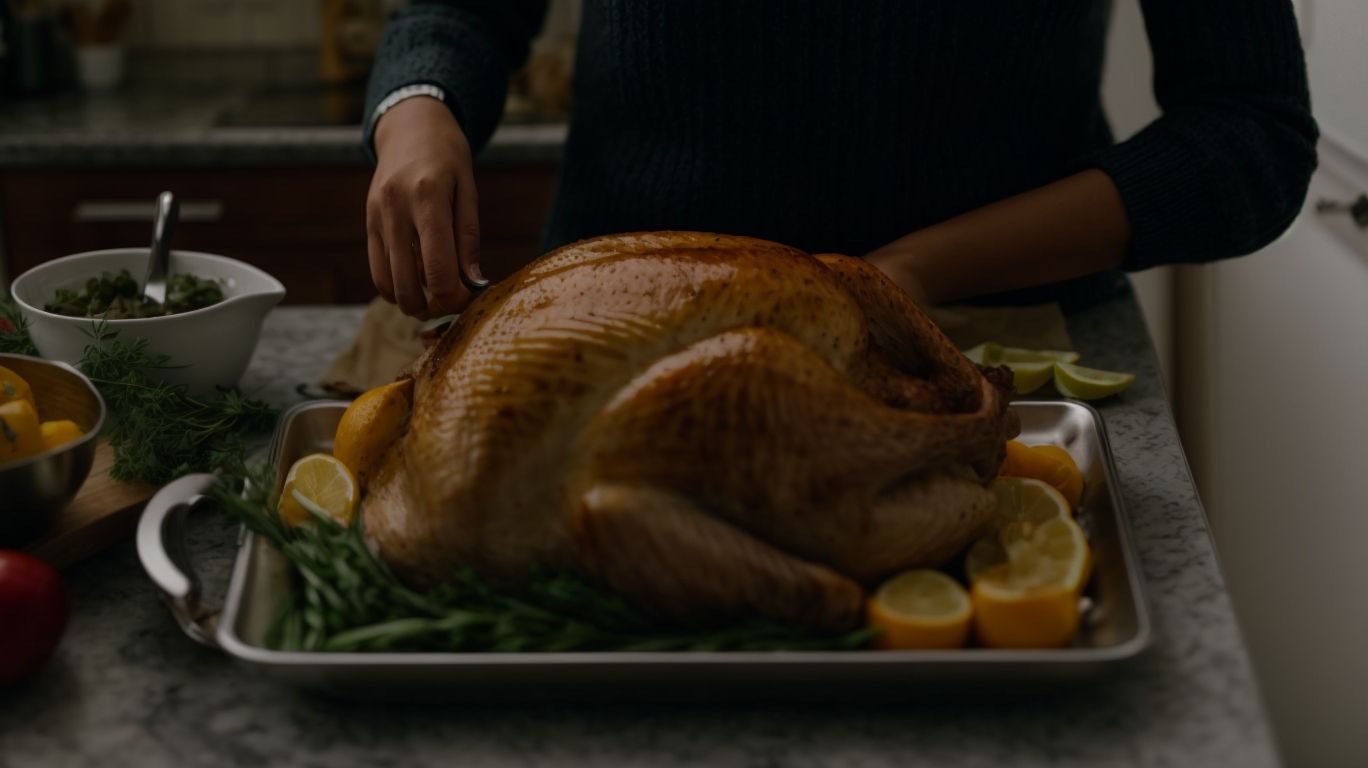
Credits: Poormet.Com – Ralph Martinez
Properly preparing the turkey before cooking is essential to ensure a safe and flavorsome dining experience.
Regarding turkey preparation, one of the crucial steps is to defrost the bird correctly. A thawing method commonly recommended is to place the turkey in the refrigerator, allowing approximately 24 hours for each 4-5 pounds of weight. This slow thawing process ensures the meat stays at a safe temperature throughout.
Seasoning the turkey generously with a mix of herbs, spices, and oils not only enhances its taste but also helps to create a beautifully flavored and aromatic dish. To further enhance the cooking process, it’s important to truss the turkey by tying the legs together and tucking the wings under the body before roasting. Trussing ensures that the bird cooks evenly, resulting in a moist and tender turkey that is sure to impress your guests.
Thawing the Turkey
Thawing the turkey properly is a critical step that helps prevent bacterial growth and ensures even cooking throughout the bird.
There are a few different methods that can be employed to safely thaw a turkey. One popular method is refrigerator thawing, where you place the turkey in the fridge and allow it to thaw slowly over a few days. This method is safe and convenient but requires more time.
Another method is water immersion, where you submerge the turkey in cold water in its sealed packaging. This method is faster but requires more attention to ensure the water stays cold. Whichever method you choose, always remember to pat the turkey dry after thawing.
Seasoning the Turkey
Seasoning the turkey is where you can infuse your culinary expertise to elevate the flavors of this holiday favorite.
When seasoning a turkey, it’s important to consider the balance of herbs, spices, and liquids to achieve a harmonious blend of flavors. Experimenting with different combinations can enhance the overall taste profile of the dish, from earthy and savory to sweet and spicy notes.
Consider a mix of traditional herbs like sage, thyme, and rosemary for a classic flavor profile, or try more exotic spices like smoked paprika, cumin, or coriander for a unique twist.
Trussing the Turkey
Trussing the turkey is a culinary technique that helps promote even cooking and maintain the bird’s shape during the roasting process.
When trussing a turkey, it involves using kitchen twine to tie the wings and legs close to the body, ensuring that the turkey cooks evenly and retains its moisture and tenderness.
By securing the turkey’s limbs in place, you create a more compact shape that allows for consistent heat distribution throughout the bird, resulting in a juicier and more succulent final dish.
Trussing not only impacts the cooking process but also enhances the presentation of the turkey, giving it a polished and professional appearance that is sure to impress your guests.
Cooking Methods
Diversifying your cooking methods for turkey opens up a world of culinary exploration and allows you to cater to various taste preferences.
Grilling turkey brings out the smoky flavors and creates beautiful grill marks on the outside, giving a perfect charred texture while sealing in the juices.
Smoking allows for a slow infusion of rich, smoky flavor throughout the meat, resulting in a tender and flavorful dish.
Slow cooking turkey, whether in a crockpot or oven, ensures a moist and succulent outcome, perfect for busy days when you want a low-maintenance cooking process.
Deep frying turkey yields a crispy, golden-brown skin while keeping the meat juicy and flavorful inside, providing a unique twist on traditional roasting methods.
Grilling
Grilling a turkey imparts a delicious smoky flavor while creating a beautifully seared exterior that locks in the meat’s juices.
When preparing to grill a turkey, it is essential to set up your grill properly for optimal results. Start by cleaning the grill grates and ensuring they are well-oiled to prevent sticking. Maintaining a consistent temperature throughout the grilling process is key. Use a two-zone cooking method, with direct heat for searing and indirect heat for slow cooking, to ensure even cooking and prevent flare-ups.
Experiment with different grilling techniques, such as using wood chips or charcoal for added smokiness, or brining the turkey beforehand to enhance its juiciness. Basting the turkey with a flavorful marinade or sauce during cooking can add layers of taste and keep the meat moist. Remember to let the turkey rest after grilling to allow the juices to redistribute for a more tender and succulent bite.
Smoking
Smoking a turkey infuses rich, smoky flavors that penetrate the meat, creating a mouthwatering dish with a unique depth of taste.
Regarding selecting wood chips for smoking a turkey, it’s essential to choose hardwood chips like hickory, oak, or applewood, as they impart robust flavors that complement the bird perfectly. The smoking duration is a crucial factor in achieving the ideal balance of tenderness and smokiness. Typically, a turkey needs to be smoked for several hours at a consistent temperature of around 225-250°F to ensure it cooks evenly and absorbs the smoky essence.
To enhance the flavor profile of your smoked turkey, consider experimenting with seasoning blends, brines, or marinades before smoking. These flavor infusion techniques can elevate the taste of the bird and add a touch of complexity to each bite. By paying attention to the wood chip selection, smoking duration, and flavor infusion methods, you can create a delectable smoked turkey that will impress your guests and leave them craving for more.
Slow Cooking
Slow cooking a turkey results in tender, juicy meat that effortlessly absorbs the flavors of the cooking liquids, creating a melt-in-your-mouth dining experience.
One of the key benefits of using a slow cooker for turkey preparation is the convenience it offers. With a slow cooker, you can set it and forget it, allowing you to go about your day while your turkey cooks to perfection. Slow cooking ensures that the meat stays moist and delicious, without the risk of drying out that often comes with traditional oven cooking methods. Braising the turkey in a mixture of flavorful broths and seasonings further enhances its taste and tenderness, giving you a delectable dish that’s sure to impress your guests.
Deep Frying
Deep frying a turkey yields a crispy, golden-brown skin while locking in the meat’s natural juices for a flavorful and indulgent dining experience.
When diving into the art of deep frying, it’s crucial to prioritize safety first. Choosing the appropriate oil for frying, such as peanut or vegetable oil, is key to avoiding flare-ups and ensuring a safe cooking environment. Maintaining the oil at the right temperature is equally vital – typically around 350°F (175°C) for optimal results. Before submerging the turkey, ensure it is fully thawed and dried to prevent any splattering or dangerous oil reactions. This meticulous process requires patience and precision but results in a succulent and delicious centerpiece for any festive occasion.
Instant Pot
Using an Instant Pot for turkey cooking offers a convenient, time-saving method that yields moist and flavorful meat with minimal effort.
When using the Instant Pot for turkey, one of the key steps is to utilize the sauté function effectively. This feature allows you to brown the turkey before pressure cooking, enhancing its flavor profile. Make sure to preheat the pot, add oil, and then sauté the turkey in batches for optimal results.
Choosing the right utensils is crucial for successful Instant Pot cooking. Opt for silicone or wooden utensils to prevent scratching the inner pot’s surface. Stirring and flipping the turkey using gentle utensils ensure even cooking and preserve the non-stick coating of the pot.
Sous Vide
Sous Vide cooking method for turkey involves precise temperature control and water immersion, resulting in impeccably cooked meat that retains its natural juices and flavors.
Setting up a water bath for sous vide turkey requires a container filled with water and a sous vide immersion circulator to maintain the water temperature at a consistent level. The key advantage of this method lies in the unparalleled temperature precision, ensuring that the turkey cooks evenly from edge to edge. This gentle cooking process also allows the flavors of seasonings and herbs to permeate the meat thoroughly, resulting in a tender and succulent turkey that is incredibly flavorful and juicy.
Tips for Cooking a Turkey Without an Oven
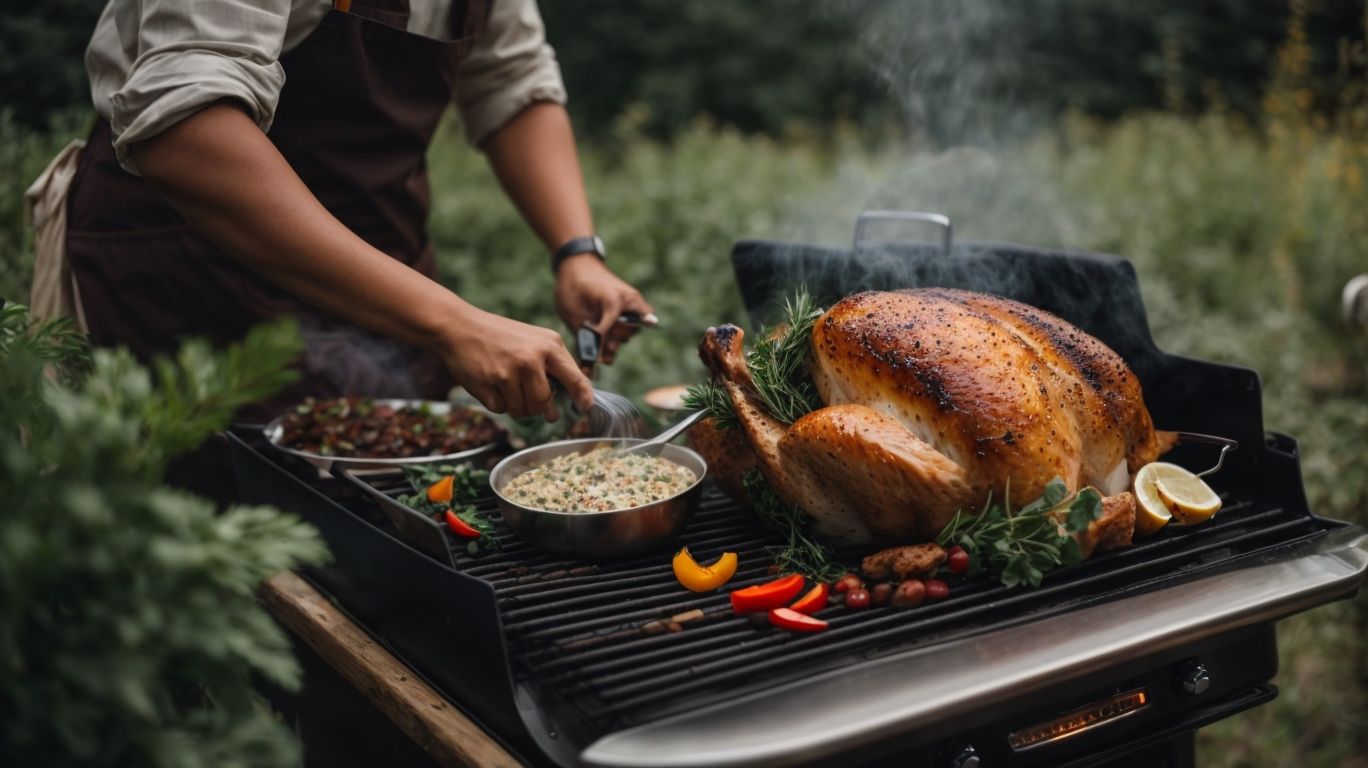
Credits: Poormet.Com – Ronald Rivera
Mastering the art of cooking a turkey without an oven involves employing key tips and techniques that ensure a delectable and safe dining experience.
One essential tool for cooking turkey without an oven is a reliable meat thermometer to ensure the bird reaches the optimum internal temperature of 165°F (74°C) at its thickest part. Monitoring the cooking times is crucial to prevent undercooked or overcooked meat.
Adjusting the cooking methods based on the alternative equipment you are using, such as a grill, smoker, or slow cooker, can lead to fantastic results.
Use a Meat Thermometer
Utilizing a meat thermometer is crucial when cooking a turkey without an oven to ensure that the meat reaches the optimal internal temperature for safe consumption.
Regarding meat thermometers, there are different types available on the market. The two main types are analog dial thermometers and digital thermometers. Digital thermometers are often considered more accurate and easier to read.
In terms of temperature guidelines, the USDA recommends that the internal temperature of the turkey should reach a minimum of 165°F (74°C) to ensure it is safe to eat. It’s essential to note that different parts of the turkey may require different temperatures to be fully cooked.
To check the doneness of the turkey, insert the thermometer into the thickest part of the meat without touching bone or the pan. Make sure to remove the turkey from the heat source before taking the temperature.
By following these best practices, you can ensure that your turkey is both delicious and safe for consumption.”
Baste the Turkey
Basting the turkey during the cooking process helps keep the meat moist, enhances flavor absorption, and contributes to a beautifully glazed exterior.
Regarding basting, there are various methods you can utilize depending on your cooking style. For oven-roasted turkey, using a baster or spoon to drizzle flavorful liquids such as melted butter, turkey broth, or a mix of herbs and spices over the bird every 30-45 minutes keeps it succulent. If you’re grilling or smoking the turkey, consider creating a basting mixture with olive oil, garlic, and citrus juices for a smoky, zesty flavor profile. Incorporating fruity ingredients like apple cider or orange juice in your basting sauce can add a hint of sweetness to the meat, complementing the savory notes perfectly.
Let the Turkey Rest
Allowing the turkey to rest after cooking is essential to redistribute juices, lock in flavors, and ensure that the meat is safe to consume.
During this resting period, the residual heat continues to cook the meat gently, resulting in a more tender and juicy bird. Professionals recommend letting the turkey rest for about 20-30 minutes before carving. This gives enough time for the juices to reabsorb into the meat, enhancing the overall taste and texture.
- One major safety consideration during this resting time is to ensure that the internal temperature of the turkey remains above 140°F (60°C) to prevent bacterial growth. You can loosely tent the bird with foil to help retain heat while still allowing airflow to prevent steam from softening the skin.
- By following these resting techniques and food safety measures, you can enjoy a perfectly cooked and flavorful turkey that will impress all your guests.
Serving and Carving the Turkey
The final act of serving and carving the turkey is a culinary spectacle that showcases your cooking skills and sets the stage for a memorable dining experience.
When presenting the turkey to your guests, make sure to place it on a beautiful serving platter or wooden board to enhance its visual appeal. Garnish the platter with fresh herbs, citrus slices, or edible flowers to add a pop of color and freshness to the dish. To carve the turkey like a pro, start by removing the legs and wings before slicing the breast meat against the grain for maximum tenderness.
Presentation Tips
Elevate the presentation of your turkey dish with artful garnishes, festive decorations, and vibrant vegetable accompaniments that entice both the eyes and the taste buds.
One creative presentation idea to wow your guests is to create a Thanksgiving cornucopia centerpiece using seasonal fruits and vegetables, intertwining colors and textures to create a stunning display on your dining table.
With a festive touch, incorporate mini pumpkins, colorful gourds, and fall leaves into your decorating scheme, adding a warm and inviting atmosphere to your dining space. Consider pairing your savory turkey with rosemary roasted carrots or creamy mashed sweet potatoes, creating a harmonious blend of flavors and aesthetics that complement the main dish beautifully.
Carving Techniques
Mastering the art of carving a turkey involves precision cuts, proper utensil selection, and strategic carving techniques that yield uniform slices of succulent meat.
One of the crucial utensils for turkey carving is a sharp carving knife with a long, thin blade that can easily glide through the meat. A sturdy carving fork helps secure the turkey in place for steady slicing. Correct positioning of the turkey is vital – start by placing the turkey breast side up on a cutting board to begin the carving process.
- Begin by removing the legs and wings using a smooth, steady motion, separating the joints smoothly to preserve the meat quality.
- Next, slice down the center of the breast, creating even slices that showcase the succulent texture of the meat.
Remember, a well-carved turkey not only tastes exquisite but also presents beautifully on the dining table, impressing your guests with your culinary expertise.
Frequently Asked Questions
How to Cook a Turkey Without an Oven?
Can I cook a turkey without an oven?
Absolutely! There are several alternative cooking methods that can produce delicious and perfectly cooked turkey without using an oven.
How to Cook a Turkey Without an Oven?
What is the best way to cook a turkey without an oven?
It ultimately depends on personal preference, but some popular methods include grilling, deep frying, and using a slow cooker.
How to Cook a Turkey Without an Oven?
How do I cook a turkey on a grill?
To cook a turkey on a grill, you can use either a gas or charcoal grill. Simply prepare the turkey as you would for roasting, then place it on a grill over indirect heat for several hours until it reaches the desired internal temperature.
How to Cook a Turkey Without an Oven?
Is it safe to deep fry a turkey?
Deep frying a turkey can be dangerous if not done properly, so it’s important to follow safety precautions and instructions carefully. However, when done correctly, it can result in a juicy and flavorful turkey.
How to Cook a Turkey Without an Oven?
Can I use a slow cooker to cook a turkey?
Yes, you can cook a turkey in a slow cooker, but it may take longer than other methods. It’s important to make sure the turkey is fully thawed and to use a meat thermometer to ensure it reaches a safe internal temperature.
How to Cook a Turkey Without an Oven?
Are there any other unique methods for cooking a turkey without an oven?
Some other unique methods include using a smoker, steaming, or even cooking the turkey in a pit in the ground. However, these methods may require more time and effort to set up.


